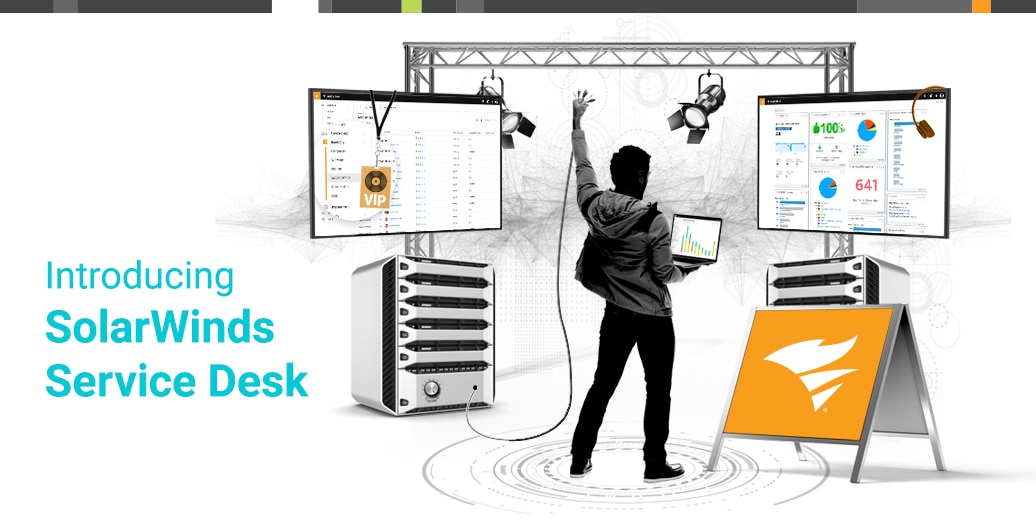One of the ultimate goals of any organization is to make sure customer satisfaction is always at its highest. We want to make sure customers have what they need when they need and that their ticket submission process is as seamless as possible. It’s not the easiest to manage, but the service desk has evolved and now we have more than a few ways to boost customer satisfaction. To that end, effectively setting and managing customers’ expectations is what drives their level of service satisfaction.
With a modern service management solution, you can take advantage of the following five capabilities to boost internal customer satisfaction within the service desk.
Automation
If the ultimate goal is to provide a better and faster experience for internal and external customers,
automations are a great way to make a step towards fulfilling that goal. Automations can make a major difference in your customer satisfaction. They cut out steps of processes that don’t require human brain power to complete. From ticket routing to staying true to SLAs, they make the service desk run faster and ensure that tickets are arriving in the right places at the right time.
Check out this in-depth guide on
how you can improve the service desk with automations.
Self-Service Options
The service portal connects customers to all of the available functions of the IT service desk and is powered by your
knowledge base and
service catalog. The purpose of the service portal is to enable customers to serve themselves. Give them all the resources they need to solve any issues they may be having.
Not only can you access the organization's service catalog and knowledge base with the service portal but you can also collect data that eliminates the usual back and forth that accompanies emails and phones. Now, customers have visibility into when their ticket will be resolved, plus data collection allows for priority and routing automations to kick in.
Self-service options allow for your service desk to have fewer tickets, and the one's technicians receive will be complete with the information they need to route, prioritize, work, and solve. This leads to a decline in resolution times and an increase in customer satisfaction.
Here’s how five of our customers
use the service portal for a better employee experience.
Service Level Agreements (SLAs)
One terrific way to boost customer satisfaction is through the use of service-level agreements, or SLAs. They are an agreed-upon scope of work that defines expectations between your service desk and your customers.
SLAs are all about accountability for the level of service, as it is agreed upon by both those providing the service and those who are using it. They not only set expectations for the customer but for your support team as well. Use SLAs to provide clear guidelines that your IT technicians must follow. This way your customers know exactly when to expect a response, resolution, or answers to any follow-up questions.
Though effective, SLAs are not a complete solution to driving customer satisfaction. Combine them with
Customer Service Satisfaction scores to help you understand not only how you’re performing against your SLAs, but also how satisfied your employees are with their experience of your service.
Here’s
how to use automation for more accurate SLA creation and tracking.
Problem and Change Management
Every organization, big or small, goes through change. It’s inevitable. Sometimes the missing piece is how it impacts customers. Each change is intended to make the organization better, but it’s important to remember that the one constant in all change management situations is the people. You have the power to not only keep up with the latest technologies, but also educate your customers to ensure they don’t just accept a change, but make the most out of it.
Change management ensures that the procedures and methods employed to enact change are standardized and ensure that they promote the prompt and efficient management of any changes to IT infrastructure.
The ultimate goal of IT change management is to limit the number and severity of change-related impacts on service. The type of change-related impacts that cause problems. If customers aren’t aware of changes that have taken place then you are more likely to see several tickets about the same issue. Alternatively, if your organization has not put any changes in place, repetitive tickets can then lead to change.
IT problem management is aimed at problem discovery, including trend analysis to detect patterns in historical data about incidents or incident details. Once problems have been identified, your technicians can then determine the change that’s needed and start the change management process.
Not sure how to distinguish what constitutes a problem? Check out our blog post that explains the
differences between incidents and problems.
Employee Feedback & CSAT
Are your SLAs improving time to response and resolution? Is there a common request or incident that needs a
catalog item? Make sure you’re paying attention to any negative responses to the service desk. Take that feedback and then make proactive changes to reflect their needs.
Another way to do this is to consistently measure and analyze results from the service desk.
Make reporting a part of your IT service catalog. What’s the average response time? Is there a ticket backlog? Are technicians adhering to SLAs? All of these are metrics that help you see how efficiently your service desk is running. They’ll help you provide your IT service desk staff with the vital insight they need to provide services in the most productive, effective, and economical manner possible.
Ideally, your service desk should be able to keep up with customer expectations. Customer satisfaction isn’t the easiest metric to manage or measure, but there are steps your organization can take to make sure customers are getting the most out of the service desk.









